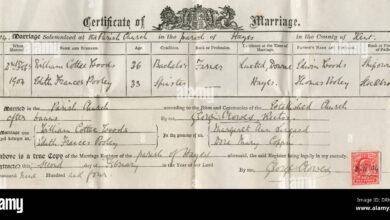Trulife Distribution Lawsuit: Implications for the Industry

Trulife Distribution Lawsuit In the world of business, legal battles often unfold behind closed doors, shaping the fate of companies and industries. One such case that has captured attention is the TruLife Distribution lawsuit, which has sent ripples through the business community. This article delves deep into the intricacies of the case, exploring its origins, the parties involved, legal issues at stake, and the far-reaching implications for both TruLife Distribution and the industry at large Trulife Distribution Lawsuit.
Background of Trulife Distribution Lawsuit
TruLife Distribution, once a beacon of success in the health and wellness sector, found itself thrust into the spotlight for all the wrong reasons. Established with a mission to provide top-quality products and services, TruLife quickly gained traction in the market. Its diverse range of offerings, coupled with aggressive marketing strategies, propelled the company to prominence. However, beneath the surface of success lurked allegations of misconduct and breach of trust, leading to the eventual eruption of the Trulife Distribution Lawsuit.
As the legal saga unfolded, it became evident that the roots of the dispute ran deep. TruLife’s journey from a promising startup to a defendant in a high-stakes lawsuit highlights the challenges and complexities of navigating the competitive landscape of modern business Trulife Distribution Lawsuit.
Emergence of the Lawsuit
The seeds of discord were sown when disgruntled parties, including former employees and business partners, voiced concerns over TruLife Distribution’s business practices. Allegations ranging from breach of contract to fraudulent activities cast a shadow over the company’s reputation. What began as isolated grievances soon snowballed into a full-blown legal battle, with plaintiffs seeking restitution for perceived wrongs Trulife Distribution Lawsuit.
The lawsuit, with its legal intricacies and high stakes, drew attention from all corners. Media outlets seized upon the story, amplifying the narrative and scrutinizing every development. As the case gained momentum, it became a focal point for discussions surrounding corporate ethics, accountability, and the role of the legal system in resolving disputes within the business realm Trulife Distribution Lawsuit.
Key Parties Involved
Central to the TruLife Distribution lawsuit are the key parties embroiled in the legal quagmire. On one side stand the plaintiffs, individuals and entities aggrieved by alleged wrongdoing at the hands of TruLife. Their grievances, backed by legal counsel and mounting evidence, form the bedrock of the case against the company. On the other side, TruLife Distribution, represented by its legal team, mounts a vigorous defense against the accusations leveled against it Trulife Distribution Lawsuit.
The courtroom drama unfolds as witnesses take the stand, testimonies are scrutinized, and evidence is presented. Behind the scenes, legal strategists and advisors work tirelessly to craft a narrative that serves their respective interests. As the case progresses, the fate of TruLife Distribution hangs in the balance, with the outcome poised to reverberate across the industry.
Legal Issues at Stake
At the heart of the TruLife Distribution lawsuit lie a myriad of legal issues, each carrying significant implications for the parties involved. Breach of contract claims, stemming from alleged violations of agreements and obligations, form the crux of the plaintiffs’ case. Accusations of fraudulent practices further compound the legal quagmire, raising questions about the integrity of TruLife’s business operations.
Intellectual property violations add another layer of complexity to the legal battle, with allegations of misappropriation and infringement clouding the company’s reputation. As the legal proceedings unfold, each legal issue is dissected and scrutinized, with implications extending far beyond the confines of the courtroom.
Case Proceedings
The journey through the legal system is fraught with twists and turns, as both sides navigate the complexities of litigation. From the filing of the lawsuit to pre-trial motions and hearings, each step in the legal process brings new challenges and opportunities. The discovery phase, in particular, serves as a battleground for the exchange of evidence and information, as parties vie for leverage in the courtroom.
As the case progresses, the stakes continue to rise, with the outcome poised to shape the future of TruLife Distribution and the broader industry. Legal arguments are honed, witnesses prepared, and strategies refined as the parties brace themselves for the trial ahead.
Examination of Evidence
In the crucible of the courtroom, evidence takes center stage as the jury deliberates the merits of the case. Documents, testimonials, and expert witness accounts are scrutinized and analyzed, with the goal of uncovering the truth amidst a sea of conflicting narratives. Forensic analysis adds a scientific dimension to the proceedings, shedding light on complex technical issues and providing clarity where ambiguity reigns.
As the case unfolds, the weight of evidence shifts, shaping the trajectory of the trial and influencing perceptions of guilt and innocence. Each piece of evidence, meticulously examined and cross-examined, serves as a building block in the construction of a compelling legal argument.
Public Response and Media Coverage
The TruLife Distribution lawsuit captures the imagination of the public, drawing widespread attention from media outlets and industry observers alike. As headlines blare and pundits pontificate, the case becomes a focal point for discussions surrounding corporate accountability and ethical conduct. Public opinion, shaped by media narratives and perceived injustices, exerts pressure on both parties to make their case in the court of public opinion.
The media frenzy surrounding the lawsuit underscores the power of storytelling in shaping perceptions and influencing outcomes. From sensationalized headlines to in-depth investigative reports, the coverage of the case reflects the broader societal fascination with scandal and intrigue. As the legal drama unfolds, media outlets vie for scoops and exclusives, adding fuel to the fire of public curiosity.
Financial Ramifications
Beyond the legal arena, the TruLife Distribution lawsuit carries significant financial implications for all parties involved. Plaintiffs seek damages commensurate with their perceived losses, while TruLife Distribution faces the prospect of crippling financial penalties. The specter of bankruptcy looms large, as the company grapples with mounting legal fees and potential settlement costs.
Insurance coverage offers a measure of protection against financial ruin, yet the extent of coverage remains uncertain amidst the legal uncertainties. As the case progresses, the financial stakes continue to rise, with the outcome poised to reshape the balance sheets of all involved.
Industry Implications
The ripple effects of the TruLife Distribution lawsuit extend far beyond the confines of the courtroom, sending shockwaves through the industry. Competitors seize upon the opportunity to gain market share and poach disgruntled customers, capitalizing on TruLife’s tarnished reputation. Regulatory authorities, meanwhile, scrutinize industry practices and enact reforms aimed at preventing similar controversies in the future.
Consumer trust, once the bedrock of TruLife’s success, hangs in the balance as the lawsuit casts doubt on the company’s integrity. The fallout from the case serves as a cautionary tale for industry players, underscoring the importance of ethical conduct and transparency in business operations.
Settlement Negotiations
Amidst the legal wrangling, both parties engage in settlement negotiations in a bid to avoid the uncertainty of trial. Mediation attempts offer a forum for constructive dialogue, as parties seek common ground and explore potential compromises. Terms of settlement discussions are carefully negotiated, with concessions made and concessions sought in pursuit of a mutually acceptable resolution.
Yet, reaching a settlement proves elusive as the parties remain entrenched in their respective positions. Legal complexities and egos collide, impeding progress and prolonging the uncertainty surrounding the case. As the clock ticks down to trial, the prospect of resolution hangs in the balance




